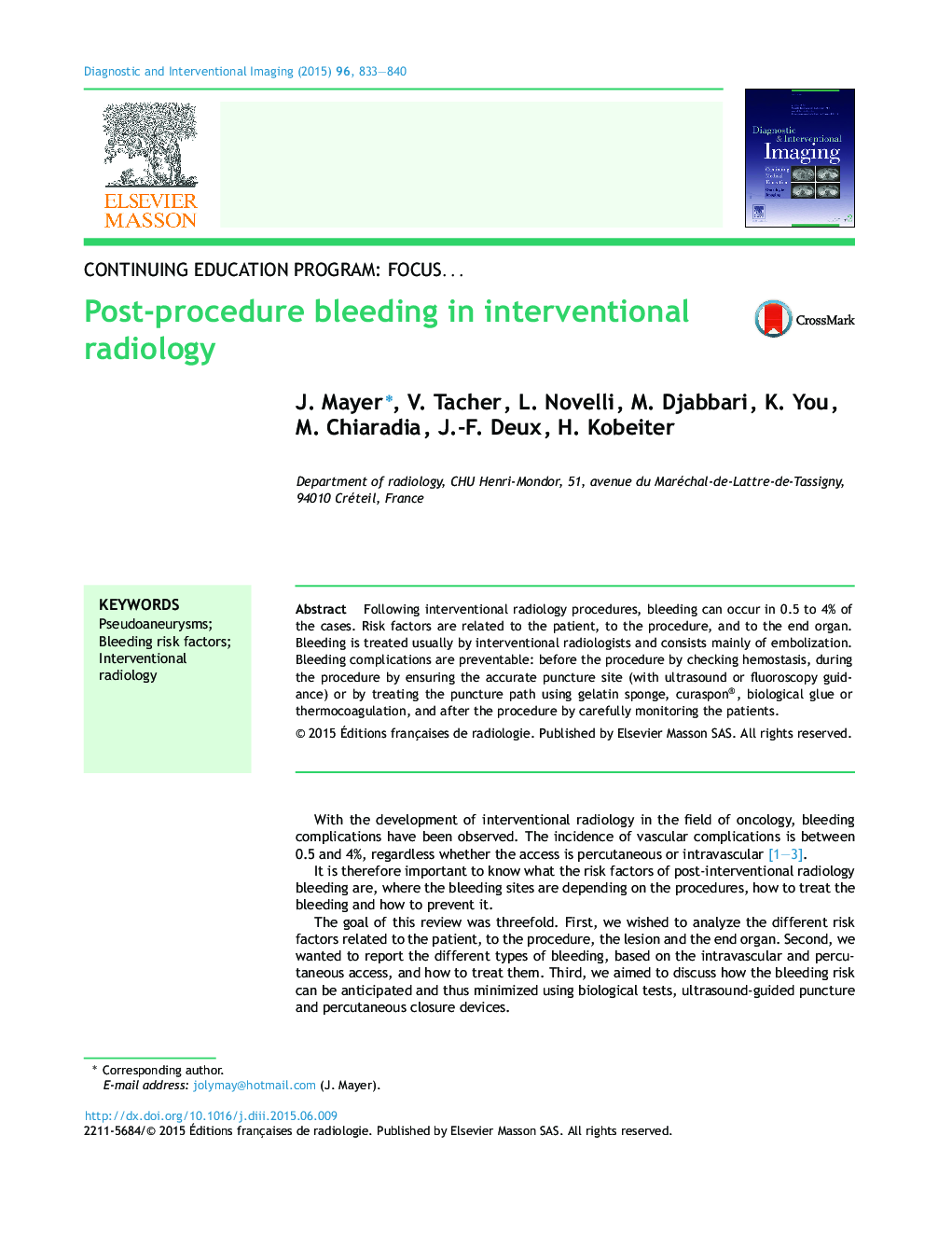| Article ID | Journal | Published Year | Pages | File Type |
|---|---|---|---|---|
| 2733691 | Diagnostic and Interventional Imaging | 2015 | 8 Pages |
Abstract
Following interventional radiology procedures, bleeding can occur in 0.5 to 4% of the cases. Risk factors are related to the patient, to the procedure, and to the end organ. Bleeding is treated usually by interventional radiologists and consists mainly of embolization. Bleeding complications are preventable: before the procedure by checking hemostasis, during the procedure by ensuring the accurate puncture site (with ultrasound or fluoroscopy guidance) or by treating the puncture path using gelatin sponge, curaspon®, biological glue or thermocoagulation, and after the procedure by carefully monitoring the patients.
Related Topics
Health Sciences
Medicine and Dentistry
Health Informatics
Authors
J. Mayer, V. Tacher, L. Novelli, M. Djabbari, K. You, M. Chiaradia, J.-F. Deux, H. Kobeiter,
